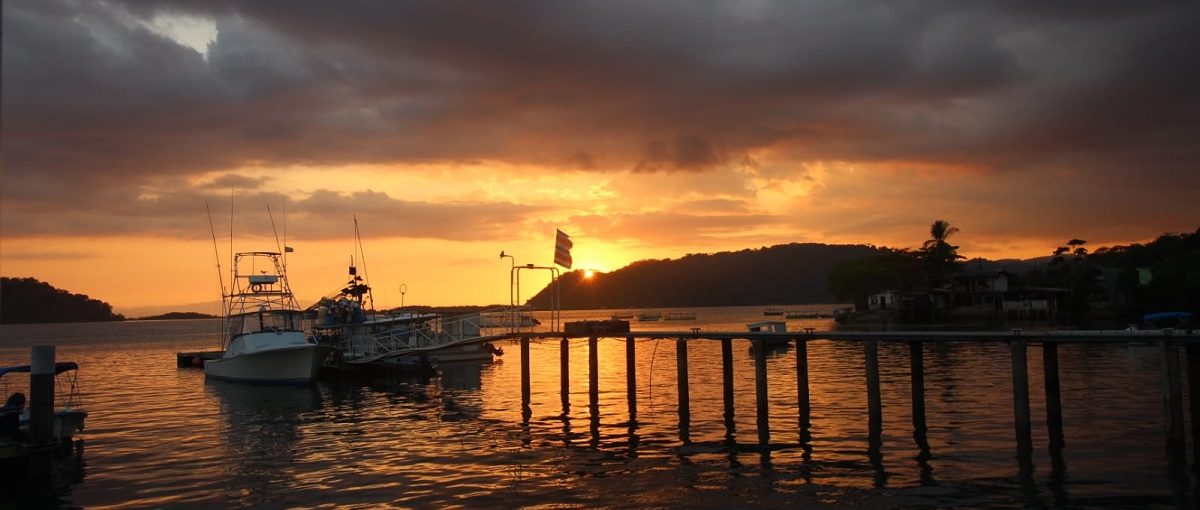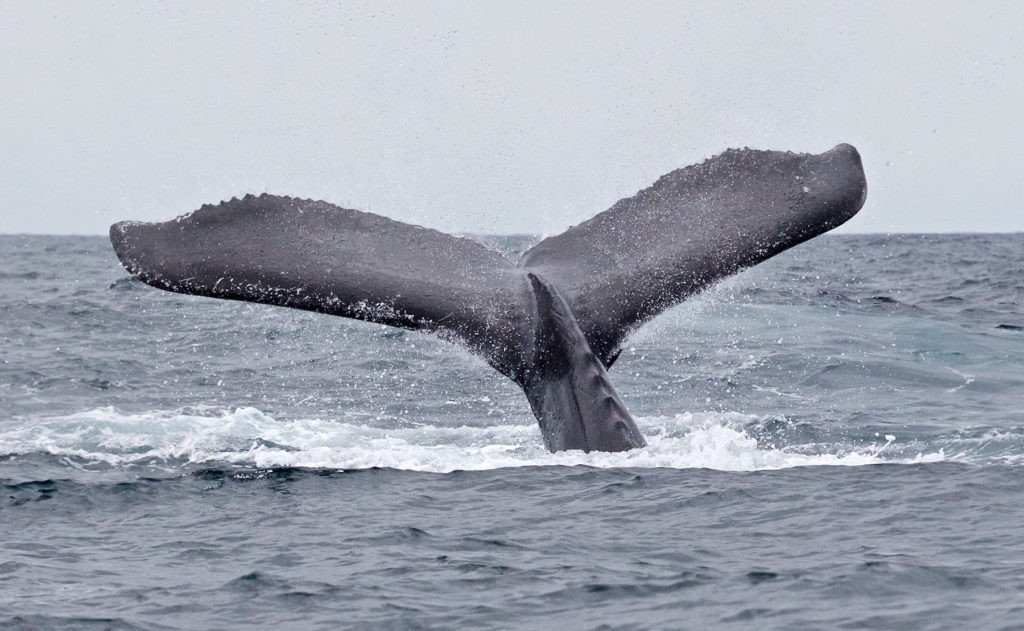FECOP Fishing Destinations: The Golfo Dulce
 by Todd Staley
by Todd Staley
Published for the Tico Times
The Golfo Dulce, in the southern zone of Costa Rica, is one of a handful of tropical fjords in the world and by many aspects a magical place.
There is so much happening in the relatively small area — around 750 square kilometers — that is impossible to experience it all in a short time. Golfito and Puerto Jimenez are the most populated areas along the gulf, and Zancudo and Pavones are popular places to visit.
 Golfito has had an up-and-down history going back to the banana plantation days when the town was bustling. There was a movie theater, bowling alley, golf course and lots of employment — although many employees “owed their soul to the company store,” so to speak. The United Fruit Company pulled up stakes in 1985 after employees went on strike.
Golfito has had an up-and-down history going back to the banana plantation days when the town was bustling. There was a movie theater, bowling alley, golf course and lots of employment — although many employees “owed their soul to the company store,” so to speak. The United Fruit Company pulled up stakes in 1985 after employees went on strike.
The government later built a duty-free shopping center, where people from all over the country can purchase home products without import tax. Shoppers are forced to overnight Golfito, which creates a national tourist industry for local hotels and restaurants.
The town has undergone a face lift, trying to make the change from a port town to an international tourist destination. People like Mauricio Arbuloa, from the Golfito Tourism Chamber, have been working hard to bring a new vision to the town.
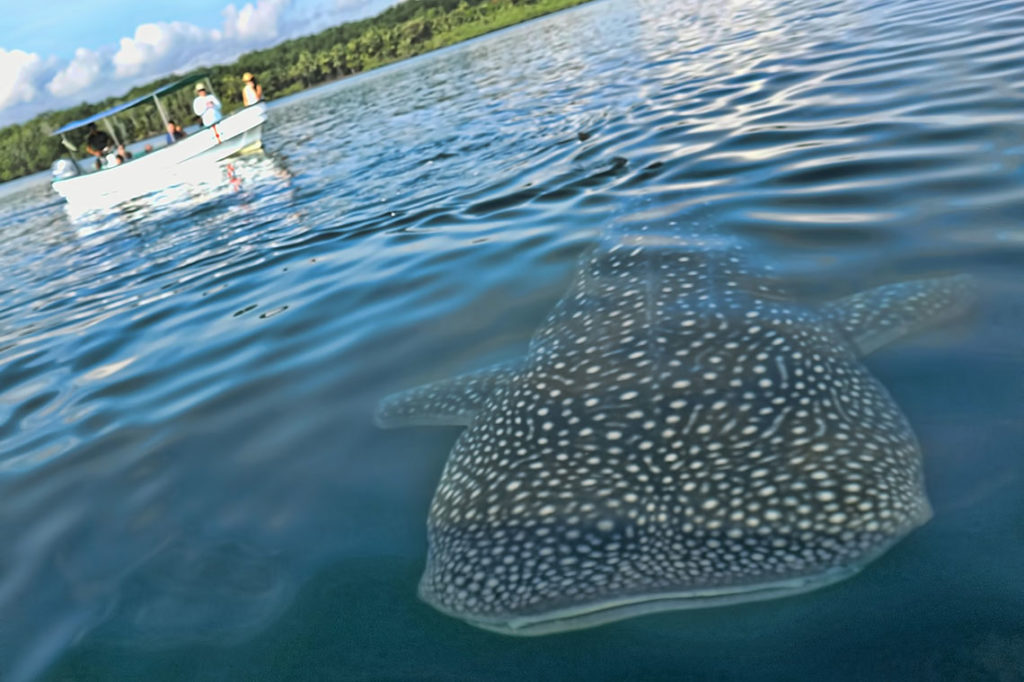 Artisanal fishing has always been a big part of Golfito culture. Years ago, fishermen rarely left the gulf and were rewarded with tuna, dorado, and snapper. Marlin and sailfish also entered the gulf. Today, fleets must head to the open ocean for tuna and dorado. About a decade ago, the gulf became the largest Marina Area of Responsible Fishing in Central America, outlawing shrimp trawling and gill nets inside the gulf. Still, artisanal fishing is a hard living but runs in the blood for many.
Artisanal fishing has always been a big part of Golfito culture. Years ago, fishermen rarely left the gulf and were rewarded with tuna, dorado, and snapper. Marlin and sailfish also entered the gulf. Today, fleets must head to the open ocean for tuna and dorado. About a decade ago, the gulf became the largest Marina Area of Responsible Fishing in Central America, outlawing shrimp trawling and gill nets inside the gulf. Still, artisanal fishing is a hard living but runs in the blood for many.
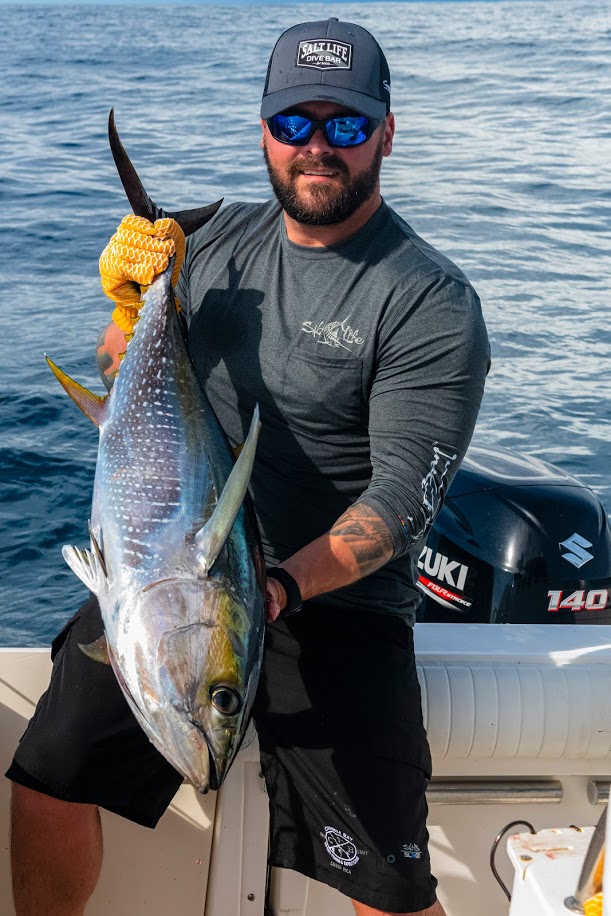 Puerto Jimenez has the busiest non-international airport in the country. A gateway to Corcovado Park, many eco and yoga resorts, as well as a prime sport fishing destination, Puerto Jimenez sees everything from backpackers to millionaires pass through daily. Once a gold-mining town, it now thrives on tourism. It has easy access to primary rainforest near Cabo Matapalo, for those who can’t go all the way to Corcovado National Park. Eco-adventures are available at almost all the hotels as well as private guides and tour companies in town.
Puerto Jimenez has the busiest non-international airport in the country. A gateway to Corcovado Park, many eco and yoga resorts, as well as a prime sport fishing destination, Puerto Jimenez sees everything from backpackers to millionaires pass through daily. Once a gold-mining town, it now thrives on tourism. It has easy access to primary rainforest near Cabo Matapalo, for those who can’t go all the way to Corcovado National Park. Eco-adventures are available at almost all the hotels as well as private guides and tour companies in town.
Folklore has made a connection between the Golfo Dulce near Ricon to UFOs. Depths of 900 feet are recorded in that area, and legend says flying saucers flew from the sky into the gulf and followed a series of underwater tunnels that reached as far as the Sierpe wetlands.
Puerto Jimenez is also the closest port to the open Pacific Ocean with protection from the elements. Traveling boaters often make a stopover, and during the high season, two smaller cruise ships now make weekly visits. It has easy access to marlin and sailfish offshore, and inside the gulf, roosterfish and cubera are abundant for the sporting angler.
The Golfo Dulce is also a surfer’s paradise, with four major breaks suited for different levels of experience. Probably the most famous — that many would like to keep for themselves — is Pavones, which boasts the second-longest left break in the world. People from all over the globe flock there for the experience.
The other side of the gulf has three breaks, starting with the biggest at Matapalo point. This break is for experienced surfers, as the waves are often big and it is rocky below. Moving just inside the gulf takes you to a break called Backwash, which offers head-high or better surf and is not quite the bone crusher as Matapalo. A little farther in is Pan Dulce (Sweet Bread), which is much more suited for folks learning or less experienced in surfing.
The Golfo Dulce is also full of life. For such a small area, you will find more marine life than in many parts of the world.
Humpback whales arrive twice a year: first, a group from the Northern Hemisphere in January and February, and a larger group from the Southern Hemisphere in August and September. Their reason for visiting is the same. It is a protected area from predators for their newborn calves to nurse, play and learn how to breach.
Photo By Pat Ford
There are often big pods of bottlenose and other types of dolphins. They can often be seen playing or following tour boats as they explore the gulf. While looking for dolphins, it is not uncommon to spot manta rays finning the surface or jumping high to impress a potential mate.
Thanks to the work of biologist Didiher Chacón and his team from Latin American Sea Turtle, we know a lot more about turtles in the Golfo Dulce than before. Chacon discovered the gulf is a major feeding ground for the Pacific green turtle. They do not nest in the area, but he has captured and tagged many in the gulf. His discovery of a turtle previously tagged in the Galapagos Islands shows just how far they travel to feed in the area.
Whale sharks show up in a group of 12 or more to feed on plankton between Puerto Jimenez and La Palma each February or March. The are not big (by whale shark standards), averaging 20 to 25 feet in length. They hang around until the first heavy rains, when they move on — possibly because the runoff affects plankton production.
Other types of sharks also inhabit the gulf. There is a population of tiger sharks, and a connection to Cocos Island was recently discovered with hammerhead sharks. There is a massive population of juveniles in the gulf, and the gulf has been declared a shark sanctuary for hammerheads.
Amazing amounts of biodiversity in and around the Golfo Dulce make it a magical place.
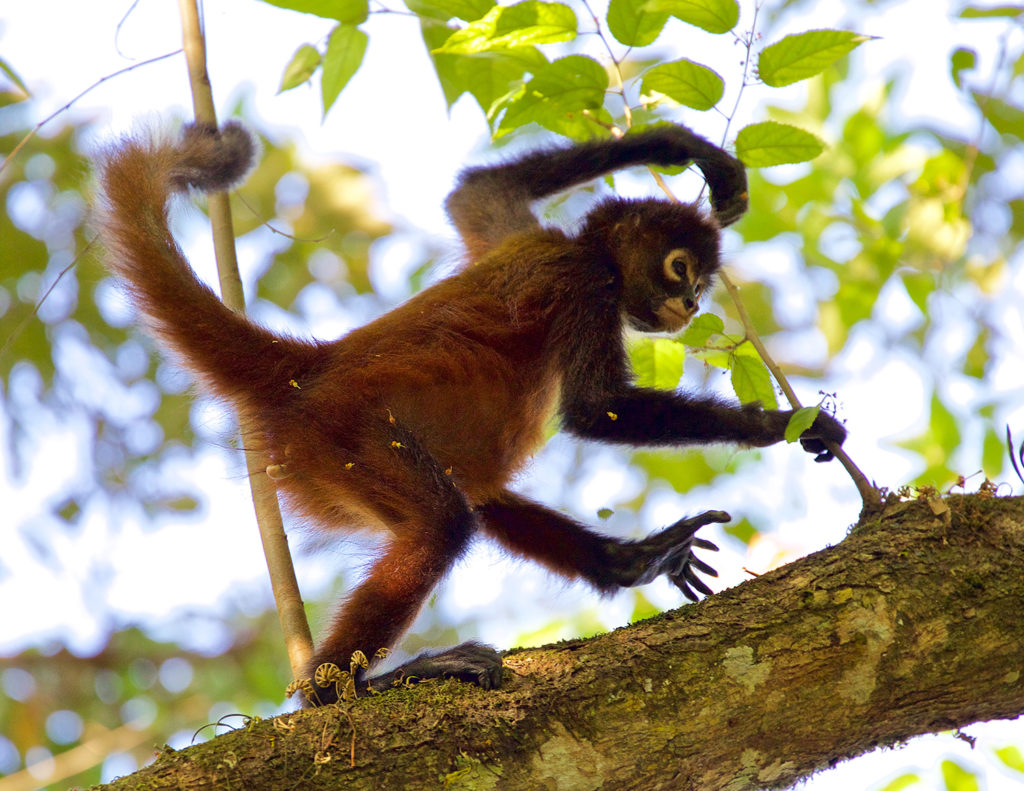
Todd Staley has run fishing sport operations on both coasts of Costa Rica for over 25 years. He recently decided to take some time off to devote full-time to marine conservation and is the communications director at FECOP.

